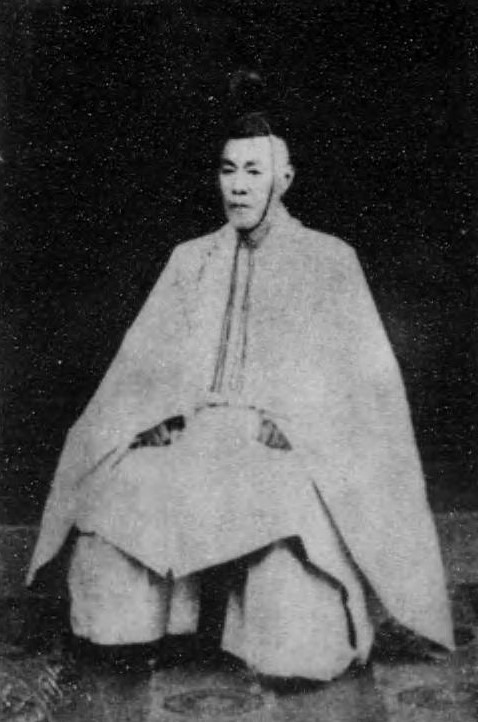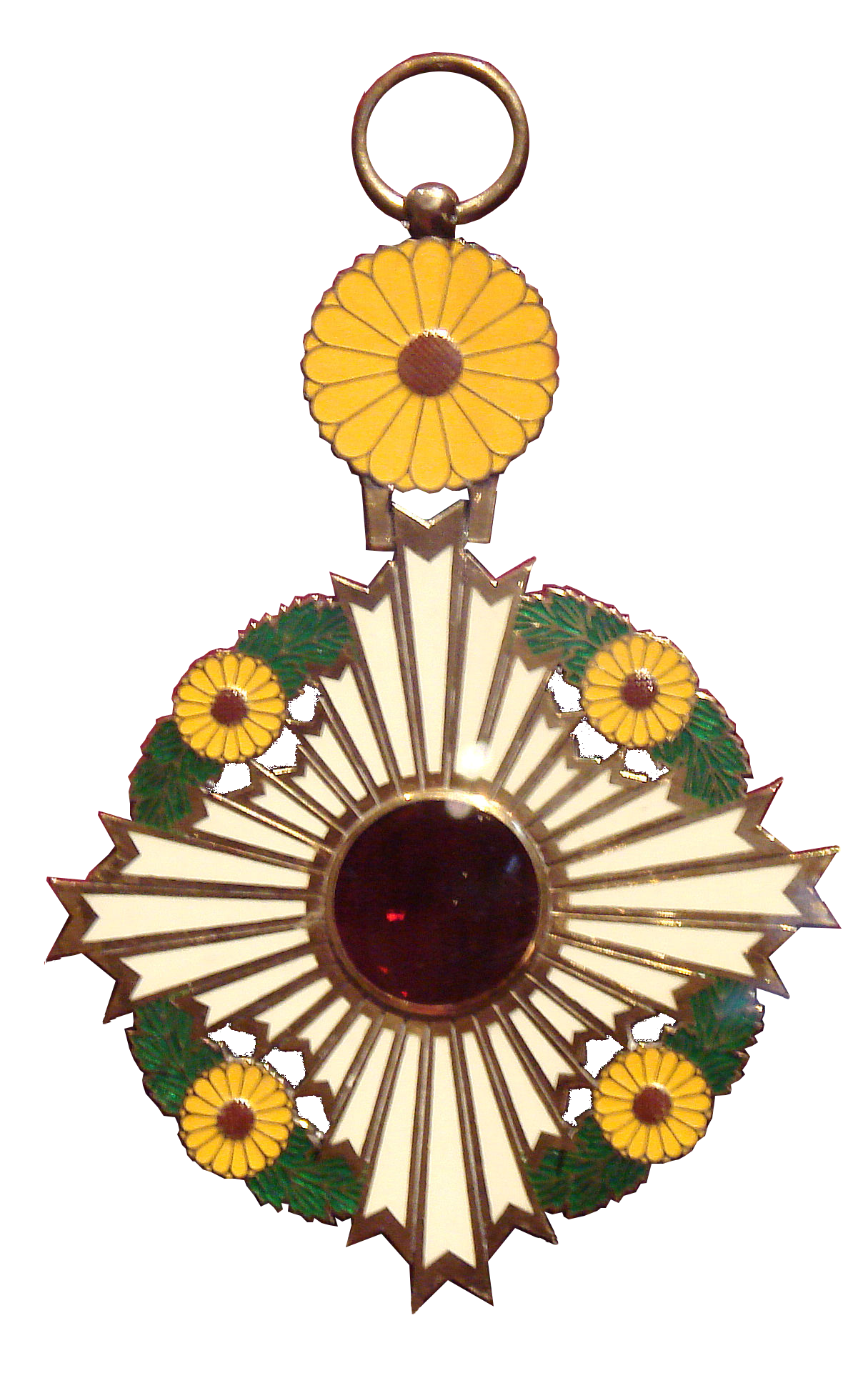Nakayama Tadayasu on:
[Wikipedia]
[Google]
[Amazon]

 Marquess Nakayama Tadayasu (Japanese 中山 忠能, 17 December 1809 – 12 June 1888) was a Japanese nobleman and
Marquess Nakayama Tadayasu (Japanese 中山 忠能, 17 December 1809 – 12 June 1888) was a Japanese nobleman and
Nakayama Tadayasu (1809–88)
at kokugakuin.ac, accessed 24 September 2013 Nakayama married Matsura Aiko (1818–1906), a daughter of Matsura Kiyoshi (1760–1841), ninth ''
 Nakayama received a series of court appointments in the service of the
Nakayama received a series of court appointments in the service of the  Appointed a member of the
Appointed a member of the
Genealogy
/ref>

 Marquess Nakayama Tadayasu (Japanese 中山 忠能, 17 December 1809 – 12 June 1888) was a Japanese nobleman and
Marquess Nakayama Tadayasu (Japanese 中山 忠能, 17 December 1809 – 12 June 1888) was a Japanese nobleman and courtier
A courtier () is a person who attends the royal court of a monarch or other royalty. The earliest historical examples of courtiers were part of the retinues of rulers. Historically the court was the centre of government as well as the official ...
of the Edo period
The or is the period between 1603 and 1867 in the history of Japan, when Japan was under the rule of the Tokugawa shogunate and the country's 300 regional '' daimyo''. Emerging from the chaos of the Sengoku period, the Edo period was characteriz ...
and then one of the Kazoku
The was the hereditary peerage of the Empire of Japan, which existed between 1869 and 1947. They succeeded the feudal lords () and court nobles (), but were abolished with the 1947 constitution.
Kazoku ( 華族) should not be confused with ...
of the post-1867 Empire of Japan
The also known as the Japanese Empire or Imperial Japan, was a historical nation-state and great power that existed from the Meiji Restoration in 1868 until the enactment of the post-World War II 1947 constitution and subsequent fo ...
. He was the father of Nakayama Yoshiko
was a Japanese lady-in-waiting in the court of the Imperial House of Japan. She was a favourite concubine of Emperor Kōmei and the mother of Emperor Meiji.
Biography
Parents
Nakayama Yoshiko was the daughter of Lord Nakayama Tadayasu, Min ...
(1836–1907), mother of the Emperor Meiji, who was born and brought up in Nakayama's household. He had the rare honour of being awarded the Order of the Chrysanthemum
is Japan's highest order. The Grand Cordon of the Order was established in 1876 by Emperor Meiji of Japan; the Collar of the Order was added on 4 January 1888. Unlike its European counterparts, the order may be conferred posthumously.
Apart fr ...
while still alive.''The "Japan Gazette" Peerage of Japan'' (Japan Gazette, 1st edition, 1912), p. 57
Early life
The second son of Nakayama Tadayori, a member of the Kuge, or court nobility, in 1821, at the age of eleven, Nakayama was named as Provisional Major-General of the Imperial Guard of the Left.Takeda HideakiNakayama Tadayasu (1809–88)
at kokugakuin.ac, accessed 24 September 2013 Nakayama married Matsura Aiko (1818–1906), a daughter of Matsura Kiyoshi (1760–1841), ninth ''
daimyō
were powerful Japanese magnates, feudal lords who, from the 10th century to the early Meiji era, Meiji period in the middle 19th century, ruled most of Japan from their vast, hereditary land holdings. They were subordinate to the shogun and n ...
'' (feudal ruler) of Hirado
is a city located in Nagasaki Prefecture, Japan. The part historically named Hirado is located on Hirado Island. With recent mergers, the city's boundaries have expanded, and Hirado now occupies parts of the main island of Kyushu. The component ...
and a famous swordsman.
Courtier
 Nakayama received a series of court appointments in the service of the
Nakayama received a series of court appointments in the service of the Emperor Ninkō
was the 120th Emperor of Japan, according to the traditional order of succession.Imperial Household Agency (''Kunaichō'') 仁孝天皇 (120)/ref> Ninkō's reign spanned the years from 1817 until his death in 1846, and saw further deterioratio ...
(1800–1846) and his successor Kōmei (1831–1867). In 1844 he became a Provisional Middle Councillor, in 1847 a Provisional Grand Councillor, and the next year a Senior Second-rank Councillor. From 1849 he was several times the Emperor Kōmei's personal envoy and secretary. In 1851 one of Nakayama's daughters, Yoshiko, joined the court as a Provisional Lady-in-Waiting, and the next year she gave birth to the Emperor's son. Nakayama was entrusted with the upbringing of his grandson, Mutsuhito
, also called or , was the 122nd emperor of Japan according to the traditional order of succession. Reigning from 13 February 1867 to his death, he was the first monarch of the Empire of Japan and presided over the Meiji era. He was the figur ...
, the future Emperor Meiji, and many years later with that of his great-grandson Yoshihito, another future emperor. In the case of Mutsuhito, Nakayama was also officially his guardian.''Encyclopædia Britannica
The (Latin for "British Encyclopædia") is a general knowledge English-language encyclopaedia. It is published by Encyclopædia Britannica, Inc.; the company has existed since the 18th century, although it has changed ownership various time ...
'', Vol. 32 (1922), p. 1,094 Yoshihito was moved to Nakayama's house on 7 December 1879, when barely three months old. He was a sickly infant, and Nakayama spent many days and nights with him.
In 1858, Nakayama was a leader of courtiers protesting against the Treaty of Amity and Commerce between Japan and the United States, which opened the ports of Kanagawa
is a Prefectures of Japan, prefecture of Japan located in the Kantō region of Honshu. Kanagawa Prefecture is the List of Japanese prefectures by population, second-most populous prefecture of Japan at 9,221,129 (1 April 2022) and third-dens ...
, Kobe
Kobe ( , ; officially , ) is the capital city of Hyōgo Prefecture Japan. With a population around 1.5 million, Kobe is Japan's seventh-largest city and the third-largest port city after Tokyo and Yokohama. It is located in Kansai region, whic ...
, Nagasaki
is the capital and the largest city of Nagasaki Prefecture on the island of Kyushu in Japan.
It became the sole port used for trade with the Portuguese and Dutch during the 16th through 19th centuries. The Hidden Christian Sites in the ...
, Niigata, and Hakodate
is a city and port located in Oshima Subprefecture, Hokkaido, Japan. It is the capital city of Oshima Subprefecture. As of July 31, 2011, the city has an estimated population of 279,851 with 143,221 households, and a population density of 412.8 ...
to foreign trade and also to settlement by Americans. In December 1862, Nakayama was appointed as the Emperor's Special Consultant for National Affairs, but in 1864 he was sent away from court as a consequence of his involvement in the Kinmon Incident
The , also known as the , was a rebellion against the Tokugawa shogunate in Japan that took place on August 20 unar calendar: 19th day, 7th month 1864, near the Imperial Palace in Kyoto.
History
Starting with the Convention of Kanagawa in 1 ...
, an attempt to control the Emperor. However, this banishment was ended in January 1867 when Kōmei died unexpectedly and Nakayama's grandson, a boy aged only fourteen, came to the imperial throne.
On 3 January 1868, when Iwakura Tomomi
was a Japanese statesman during the Bakumatsu and Meiji period. He was one of the leading figures of the Meiji Restoration, which saw Japan's transition from feudalism to modernity.
Born to a noble family, he was adopted by the influential Iwa ...
arranged the seizure of the Kyoto Imperial Palace
The is the former palace of the Emperor of Japan. Since the Meiji Restoration in 1869, the Emperors have resided at the Tokyo Imperial Palace, while the preservation of the Kyoto Imperial Palace was ordered in 1877. Today, the grounds are open t ...
and initiated the Meiji Restoration
The , referred to at the time as the , and also known as the Meiji Renovation, Revolution, Regeneration, Reform, or Renewal, was a political event that restored practical imperial rule to Japan in 1868 under Emperor Meiji. Although there were ...
, which resulted in the creation of the post-Shōgun Empire of Japan
The also known as the Japanese Empire or Imperial Japan, was a historical nation-state and great power that existed from the Meiji Restoration in 1868 until the enactment of the post-World War II 1947 constitution and subsequent fo ...
, Nakayama was among the courtiers who supported this action. According to Peter Kornicki
Peter Francis Kornicki (born 1 May 1950) FBA is an English Japanologist. He is Emeritus Professor of Japanese at Cambridge University and Emeritus Fellow of Robinson College, Cambridge.
Kornicki was born at Maidenhead on 1 May 1950, the eldest s ...
, "Nakayama's cooperation with Iwakura had been essential to the success of the coup d'etat". Nakayama and Iwakura both became influential courtier-politicians in the Meiji period.
 Appointed a member of the
Appointed a member of the Order of the Rising Sun
The is a Japanese order, established in 1875 by Emperor Meiji. The Order was the first national decoration awarded by the Japanese government, created on 10 April 1875 by decree of the Council of State. The badge features rays of sunlight ...
, first class, in 1880, Nakayama was created a Marquess in 1884, when the Emperor created a new hierarchical peerage
A peerage is a legal system historically comprising various hereditary titles (and sometimes non-hereditary titles) in a number of countries, and composed of assorted noble ranks.
Peerages include:
Australia
* Australian peers
Belgium
* Belgi ...
on European lines. This gave him a seat in the House of Peers, the upper house
An upper house is one of two Debate chamber, chambers of a bicameralism, bicameral legislature, the other chamber being the lower house.''Bicameralism'' (1997) by George Tsebelis The house formally designated as the upper house is usually smalle ...
of the Imperial Diet. On 14 May 1888, a month before his death, he received the supreme accolade of being awarded the Grand Cordon of the Order of the Chrysanthemum
is Japan's highest order. The Grand Cordon of the Order was established in 1876 by Emperor Meiji of Japan; the Collar of the Order was added on 4 January 1888. Unlike its European counterparts, the order may be conferred posthumously.
Apart fr ...
during his lifetime, a rarely bestowed honour.
Honours
Court ranks
*Fifth rank, junior grade (1810) *Fifth rank, senior grade (1812) *Senior fifth rank, junior grade (1814) *Fourth rank, junior grade (1816) *Fourth rank, senior grade (1818) *Senior fourth rank, junior grade (1820) *Senior fourth rank, senior grade (1834) *Third rank (1841) *Senior third rank (1843) *Second rank (1845) *Senior second rank (1848) *First rank (1868)Titles
*Marquess (7 July 1884)Decorations
*Grand Cordon of theOrder of the Rising Sun
The is a Japanese order, established in 1875 by Emperor Meiji. The Order was the first national decoration awarded by the Japanese government, created on 10 April 1875 by decree of the Council of State. The badge features rays of sunlight ...
(2 November 1880)
*Grand Cordon of the Order of the Chrysanthemum
is Japan's highest order. The Grand Cordon of the Order was established in 1876 by Emperor Meiji of Japan; the Collar of the Order was added on 4 January 1888. Unlike its European counterparts, the order may be conferred posthumously.
Apart fr ...
(14 May 1888)/ref>
Ancestry
Notes
{{DEFAULTSORT:Nakayama, Tadayasu 1809 births 1888 deaths Fujiwara clan Kazoku Kuge Nakayama family People from Kyoto Grand Cordons of the Order of the Rising Sun Japanese courtiers